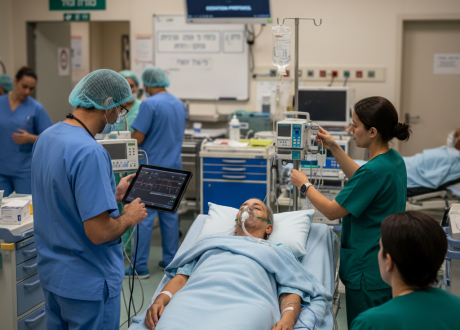Ilaria Oldrini1, Laura Coventry1, http://orcid.org/0000-0002-5880-8235Alex Novak2, Steve Gwilym3,4, http://orcid.org/0000-0003-1008-3105David Metcalfe1,2,3
Correspondence to Dr David Metcalfe, Nuffield Department of Orthopaedics, Rheumatology and Musculoskeletal Sciences, University of Oxford, Oxford, Oxfordshire, UK; david.metcalfe@ndorms.ox.ac.uk
Abstract
Background Prereduction radiographs are conventionally used to exclude fracture before attempts to reduce a dislocated shoulder in the ED. However, this step increases cost, exposes patients to ionising radiation and may delay closed reduction. Some studies have suggested that prereduction imaging may be omitted for a subgroup of patients with shoulder dislocations.
Objectives To determine whether clinical predictors can identify patients who may safely undergo closed reduction of a dislocated shoulder without prereduction radiographs.
Methods A systematic review and meta-analysis of diagnostic test accuracy studies that have evaluated the ability of clinical features to identify concomitant fractures in patients with shoulder dislocation. The search was updated to 23 June 2022 and language limits were not applied. All fractures were included except for Hill-Sachs lesions. Quality assessment was undertaken using the Quality Assessment of Diagnostic Accuracy Studies 2 tool. Data were pooled and meta-analysed by fitting univariate random effects and multilevel mixed effects logistic regression models.
Results Eight studies reported data on 2087 shoulder dislocations and 343 concomitant fractures. The most important potential sources of bias were unclear blinding of those undertaking the clinical (6/8 studies) and radiographic (3/8 studies) assessment. The prevalence of concomitant fracture was 17.5%. The most accurate clinical predictors were age >40 (positive likelihood ratio (LR+) 1.8, 95% CI 1.5 to 2.1; negative likelihood ratio (LR−) 0.4, 95% CI 0.2 to 0.6), female sex (LR+ 2.0, 95% CI 1.6 to 2.4; LR− 0.7, 95% CI 0.6 to 0.8), first-time dislocation (LR+ 1.7, 95% CI 1.4 to 2.0; LR− 0.2, 95% CI 0.1 to 0.5) and presence of humeral ecchymosis (LR+ 3.0–5.7, LR− 0.8–1.1). The most important mechanisms of injury were high-energy mechanism fall (LR+ 2.0–9.8, LR− 0.4–0.8), fall >1 flight of stairs (LR+ 3.8, 95% CI 0.6 to 13.1; LR− 1.0, 95% CI 0.9 to 1.0) and motor vehicle collision (LR+ 2.3, 95% CI 0.5 to 4.0; LR− 0.9, 95% CI 0.9 to 1.0). The Quebec Rule had a sensitivity of 92.2% (95% CI 54.6% to 99.2%) and a specificity of 33.3% (95% CI 23.1% to 45.3%), but the Fresno-Quebec rule identified all clinically important fractures across two studies: sensitivity of 100% (95% CI 89% to 100%) in the derivation dataset and 100% (95% CI 90% to 100%) in the validation study. The specificity of the Fresno-Quebec rule ranged from 34% (95% CI 28% to 41%) in the derivation dataset to 24% (95% CI 16% to 33%) in the validation study.
Conclusion Clinical prediction rules may have a role in supporting shared decision making after shoulder dislocation, particularly in the prehospital and remote environments when delay to imaging is anticipated.








